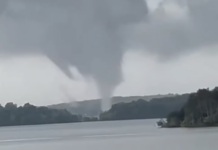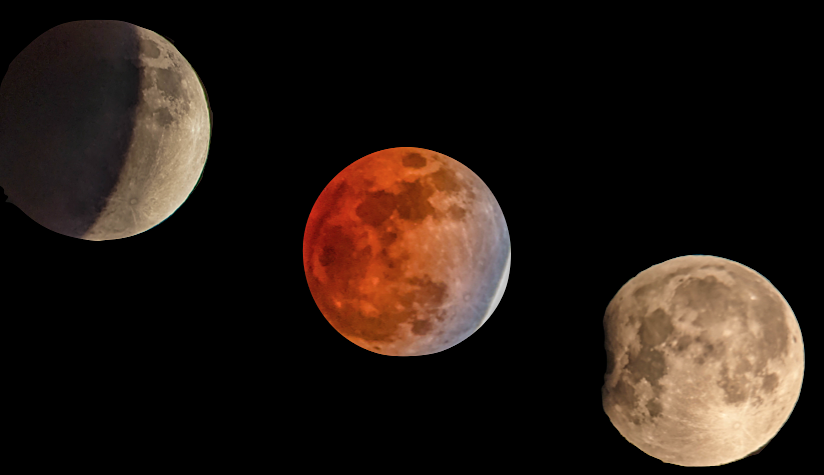
In the wee hours of November 19, the moon spent 3 hours, 28 minutes and 23 seconds drenched in the Earth’s shadow. Stargazers from all across the US were witness to the longest partial lunar eclipse in 580 years. According to NASA, there hasn’t been a longer partial lunar eclipse since February 18, 1440, and it will remain the longest partial lunar eclipse until February 8, 2669.
Despite not being a true, full “blood moon”, the depth of the eclipse made it look essentially the same. 97% of the moon’s surface fell into the deepest parts of Earth’s shadow bathing it in the deep red glow of all the sunrises and sunsets around the world.
The eclipse officially began just after 1 a.m. when the moon dipped into the penumbra, the part of Earth’s shadow that is only partially shielded from sunlight. This part of the eclipse is pretty much invisible except to those with a very trained eye. The parts we care about began at 2:15 a.m. when the moon began its journey into the umbra, the dark part of Earth’s shadow. Over the next hour and a half, the moon would fall deeper into that shadow.

As it neared maximum eclipse the deep reds really began to shine. This is caused by sunlight refracting through Earth’s atmosphere. Essentially you are seeing all the simultaneous sunrises and sunsets all at once being reflected off the surface of the moon. It is commonly known as the “blood” moon, though the color itself lends to a slightly more orange tinge. At maximum eclipse, just a thin sliver of the moon was visibly lit by the sun. The star that makes an appearance in the photo below is V1124 Taurus, by all accounts, a very dim 7.5 magnitude variable star.
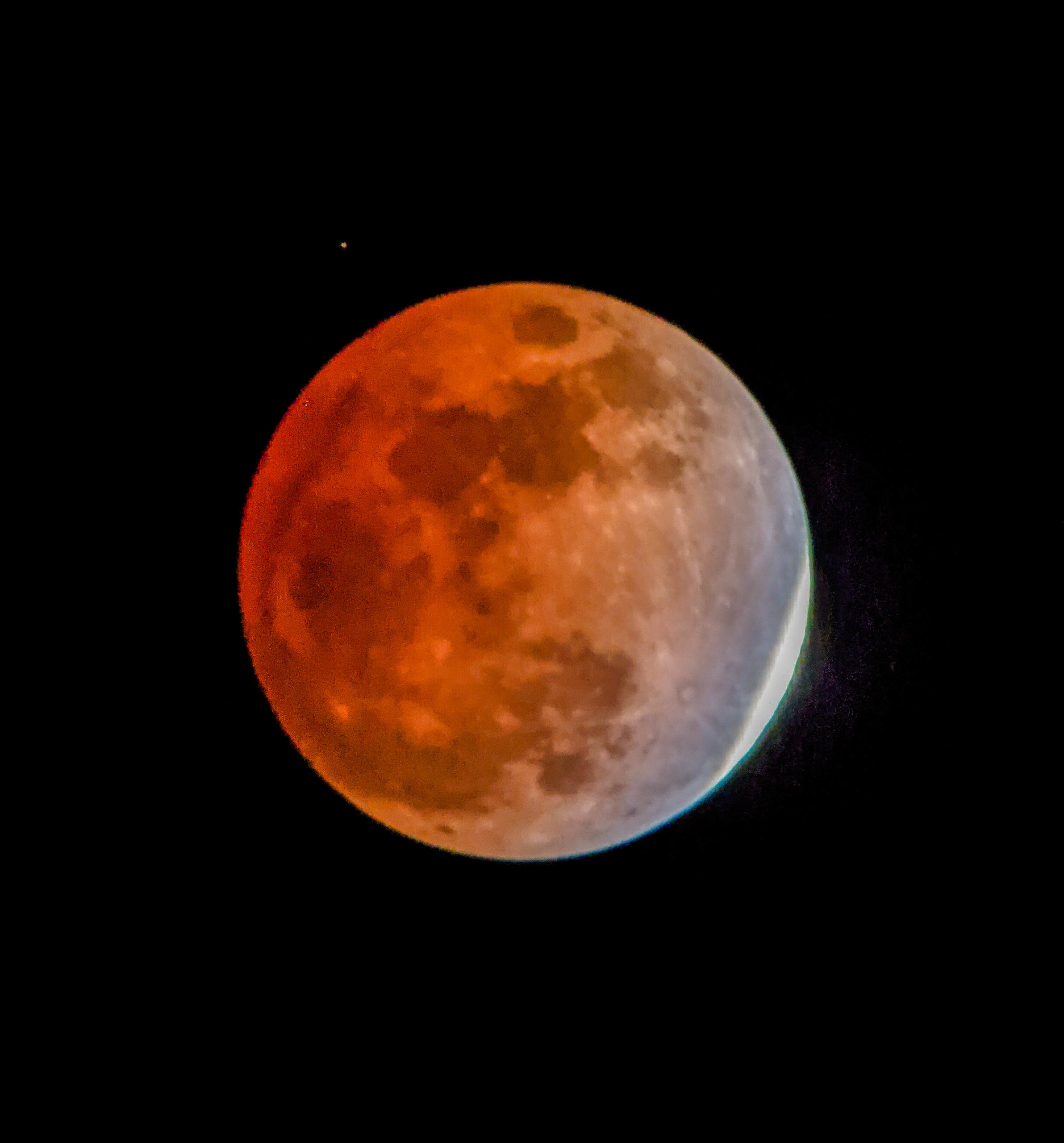
The sliver appeared to rotate around the disc of the moon slightly as the eclipse progressed and it moved through the circular-shaped hole in the light left by Earth. During this time the moon appeared to give somewhat of a diamond ring appearance with just the thin crescent shining like a diamond in the sky.
The moon sat near the Pleiades during the eclipse as seen in the shot below which was taken near maximum eclipse. The moon can be seen illuminating some high, thin clouds present behind the front.
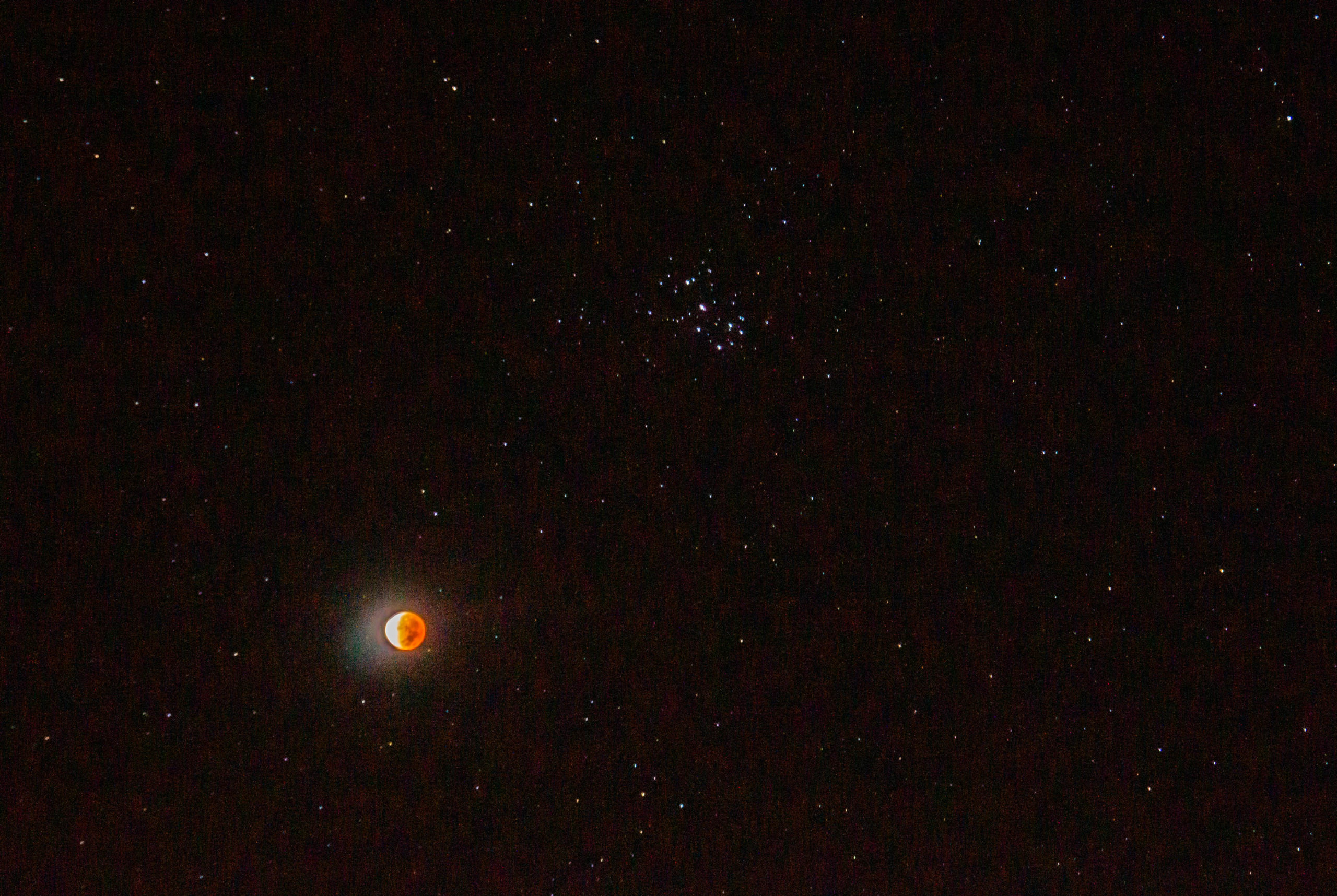
The moon slowly slipped out of the shadow over the next hour with the eclipse officially ending just before 6 a.m.
I took the following photo about 10 minutes before the shadow disappeared.
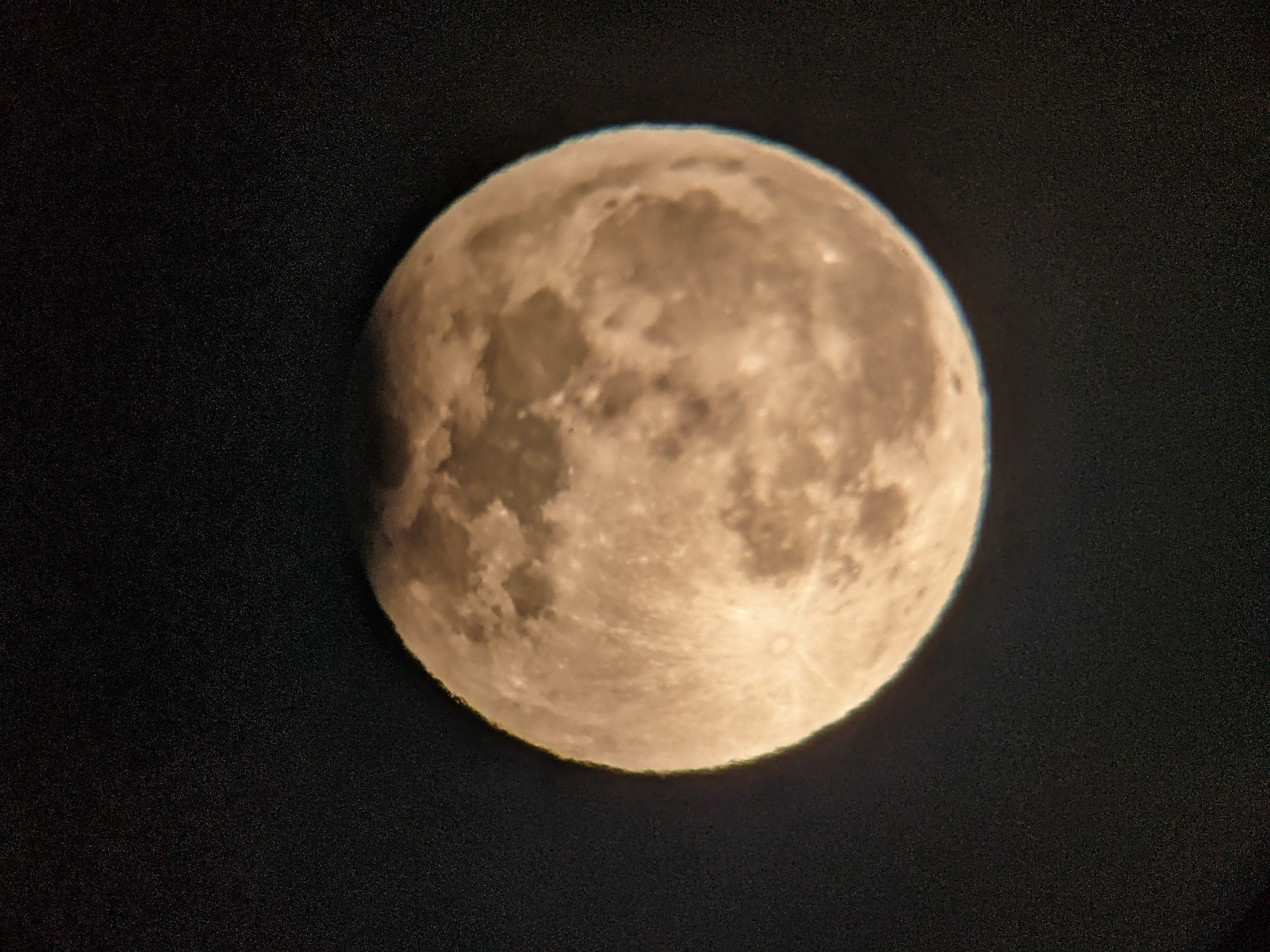
One interesting thing to note is the quality of these photographs. Extremely strong winds were present at my location during the eclipse, with winds at the ground of 20-30 mph and winds higher in the atmosphere even higher.
In the above image, you can see the edges of the moon have a very stepladder-like appearance. This is atmospheric shimmer caused by the strong winds. This is the same reason stars twinkle, and in fact, if you noticed any bright stars during the eclipse you would have seen them twinkling like mad.
It made shooting this particular eclipse incredibly difficult for areas behind the cold front where winds were strongest, like over North Georgia and Western North Carolina.
Despite the wind and cold, it was a beautiful night to view this eclipse. The next total lunar eclipse comes next May, so we’ll be looking forward to sharing that one with you as well!
Until then, keep lookin’ up!






